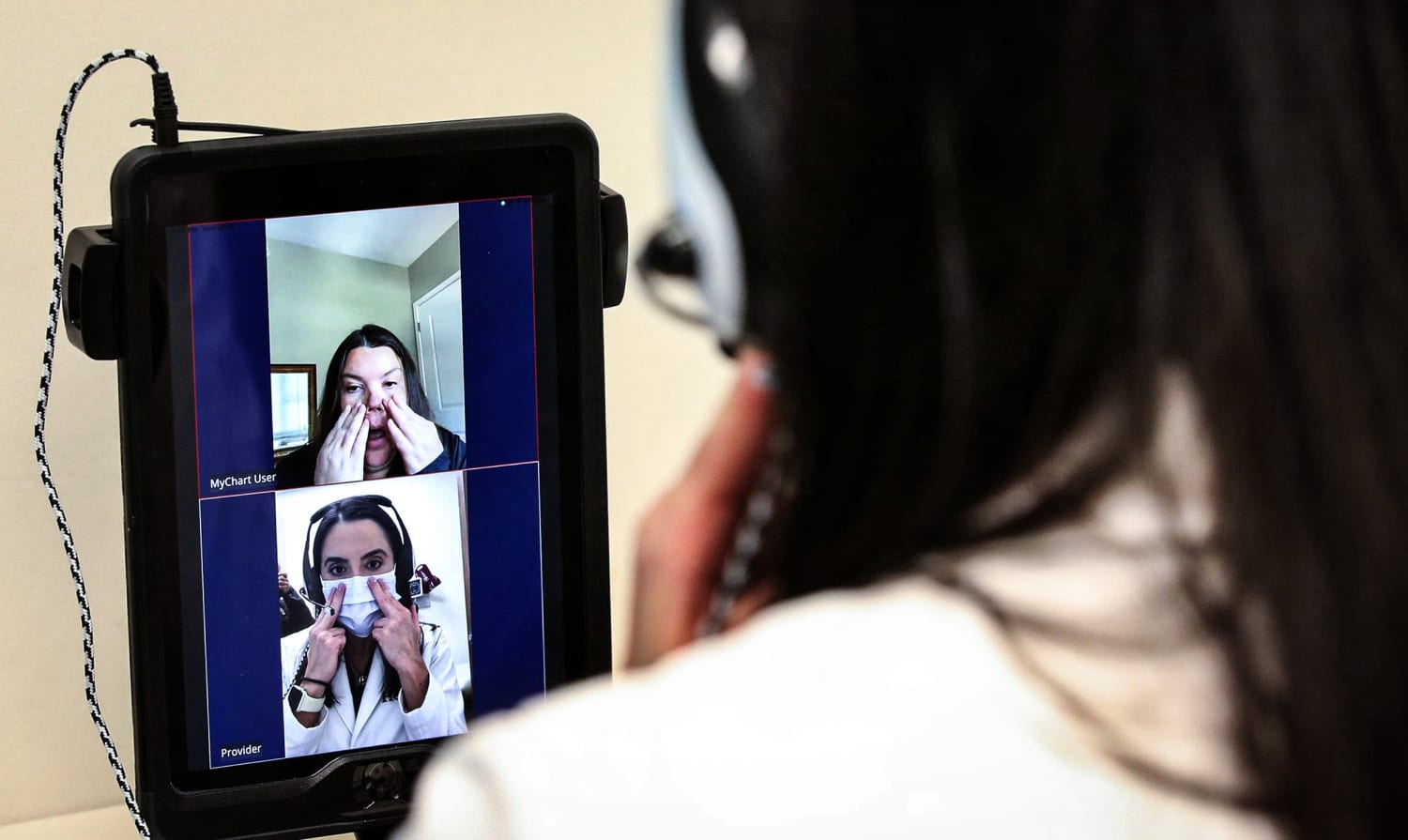Nearly one in 10 of the telehealth visits at Johns Hopkins are with patients who reside in states other than the states where the system has operations, Hasselfeld said. He said it’s now routine for the staff members who scheduled appointments to double-check where a patient will physically be located for a video call, a fact that didn’t matter two years ago.
“It’s been really difficult to try to explain that providers can see patients only in specific areas,” Hasselfeld said.
Separate from the issue of medical licensing is who pays for telehealth visits — and whether providers get paid as much as they do for in-person visits. Since March 2020, Medicare has waived many restrictions on remote visits, but those waivers are temporary and are scheduled to end after the federal Covid-19 emergency order expires unless Congress intervenes.
Doctors, nurses and other medical professionals have historically been licensed at the state level, not by the federal government, and state medical boards have often tried to block out-of-state physicians from seeing patients in their jurisdiction.
“A lot of it is inertia from the way medicine has been practiced in this country for years and decades really,” said David Peloquin, a partner at the law firm Ropes & Gray in Boston who represents academic hospital systems.
The cross-state practice of medicine wasn’t even an issue before the widespread adoption of the internet made virtual visits possible, Peloquin said, and demand really picked up a decade ago as doctors involved in clinical trials sought geographic flexibility. Then the pandemic accelerated the demand.
But there are proponents of keeping something like a state-by-state patchwork, including state medical boards that run the licensing systems. They cite potential abuses such as unlawful prescription drug sales or the possible difficulties of one medical board investigating a physician in a second state.
“We want to achieve greater portability, but also we don’t want a system that compromises patient safety,” said Lisa Robin, chief advocacy officer of the Federation of State Medical Boards.
“We want to achieve greater portability, but also we don’t want a system that compromises patient safety.”
Lisa Robin, chief advocacy officer of the Federation of State Medical Boards.
In April, the federation put forward a new model policy for states to potentially adopt that would support patients traveling out of state or participating in remote clinical trials. The model policy stopped short, though, of full reciprocity between states.
The changes put in place two years ago were meant to be emergency measures at a time of localized spikes in Covid-19 in states such as New York.
“They thought that there’d be a serious Covid rise in cases in one state, and the state next door, for example, could have professionals who could help,” said Krista Drobac, executive director of the Alliance for Connected Care, a lobbying coalition of large employers and hospital systems such as Stanford who favor deregulation.
But it turned out there were lots of reasons why someone might want to see a doctor based in another state. It may be because a patient has moved or has limited choices in their area, especially in certain fields such as mental health. They may want to see a specialist at a highly ranked hospital or participate in a clinical trial based elsewhere.
Or a patient may simply be on vacation or traveling out of state and want to speak with their regular doctor — a situation where medical licensing boards have often frowned on interstate phone or video call appointments.
“Practically, it’s just a pain in the butt to go to a doctor’s office if it’s far away,” said Dr. Ateev Mehrotra, a professor of health care policy and medicine at Harvard Medical School.
Last year, he wrote about a cancer patient who lives in New York who suddenly had to begin driving three-plus hours to Massachusetts after a state waiver lapsed and Boston-based cancer doctors could no longer practice medicine on a patient over the state line.
“We can’t get every single one of our docs licensed in New York,” he said.
There are numerous proposals for lowering licensing barriers, including moving to a driver’s license-type system, but none has moved forward. And an interstate compact launched in 2017 has attracted relatively few participants.
Mehrotra, who researches telemedicine, said the experience of the pandemic revealed clear patterns in who uses remote visits and why. Urban areas saw a large uptake, he said, because they have better internet access and previously had less of a need for telemedicine before the pandemic. And some fields, such as ophthalmology, didn’t translate as well to video chats as others such as psychiatry.
“You see a lot of telemedicine for anxiety. You don’t see as much for cataracts,” he said.
Source: | This article originally belongs to Nbcnews.com










